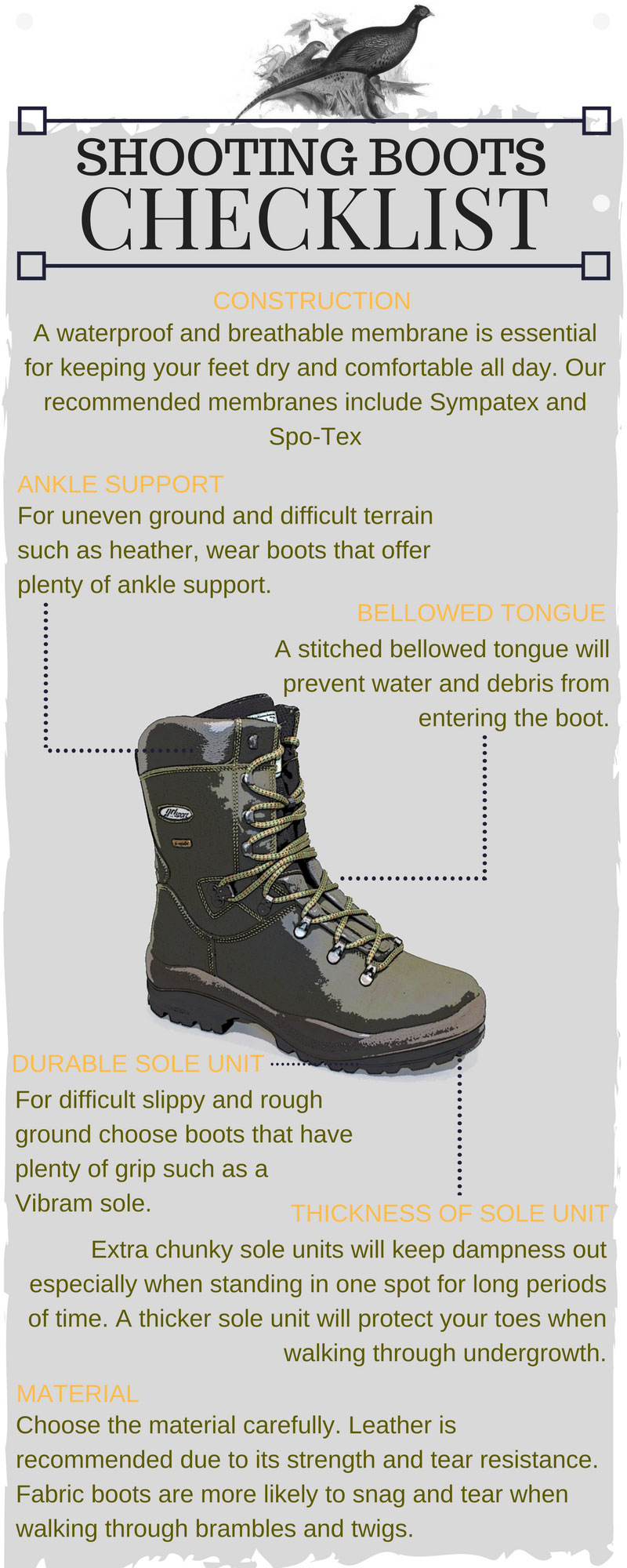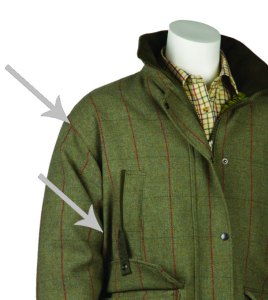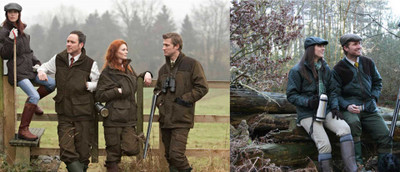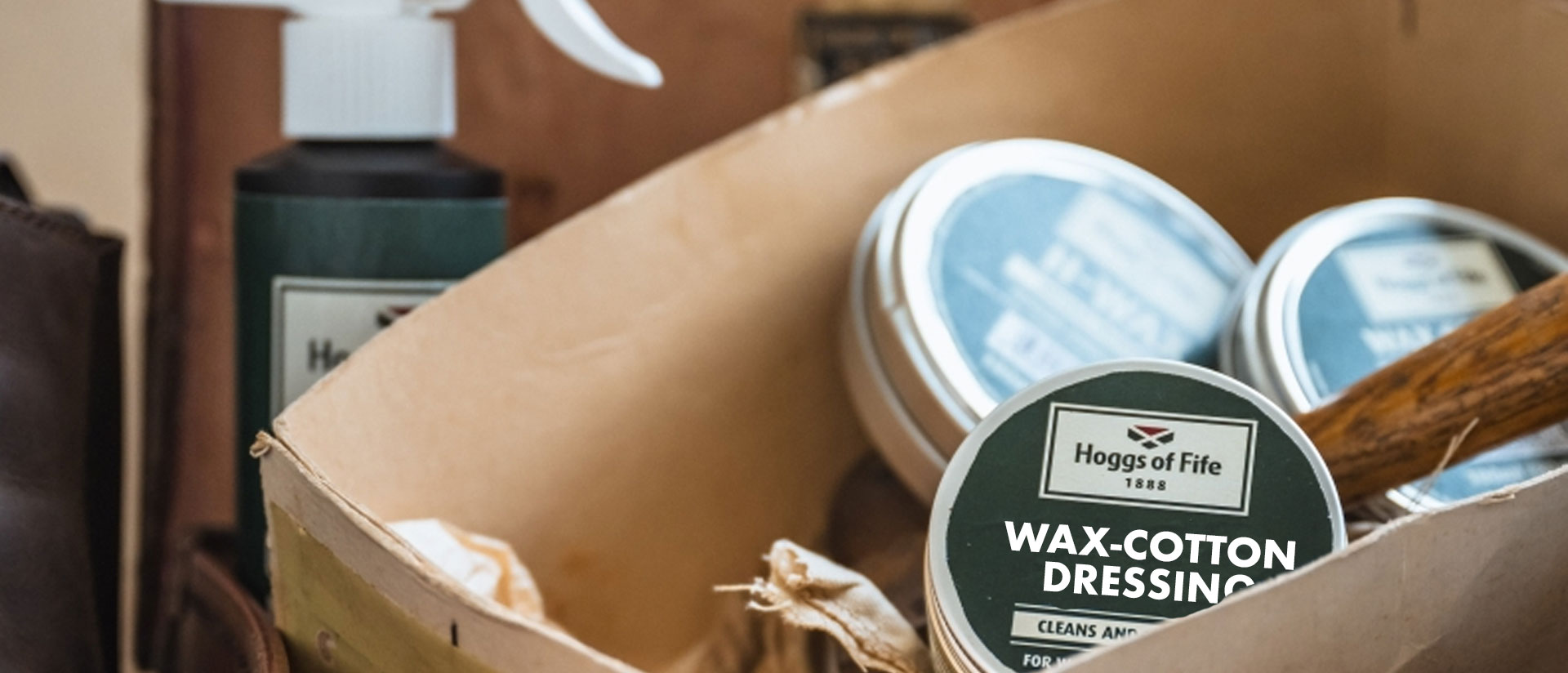Filter by Topic:
Posted by B.Bithell on May 02, 2024
Shooting Etiquette - What should I wear?
Following shooting etiquette from the outset will ensure you enjoy your whole experience!
In this chapter, we focus upon essential items of shooting clothing and suitable footwear. We'll also explore some interesting items that you might find useful to take with you when attending game shooting events.
Of course, starting out with a new hobby can be expensive - and game shooting is no different!
Game Shooting Etiquette
When choosing the right shooting clothing, you'll need to think about how formal - or informal - the events you'll be attending will be.
If you've been invited to a formal event, it's best to clarify with the organiser what the expectations are with regard to what to wear. There may, for example, be guidance on specific colours or fabrics such as tweed. However, safety and comfort should always be the main priority.
1. Sturdy shooting boots
A tough pair of sturdy leather shooting boots with plenty of ankle support is recommended. Wellington boots can be worn, but there is generally a lack of ankle and foot support with these that renders them unsuitable for use on uneven ground.
When thinking about buying a pair of shooting boots, remember to take into account how waterproof they will be and to what degree they are 'breathable'. Remember that you might be standing on damp wet ground for long periods of time or walking through long grass from time to time, so deep sole units are essential!
We have put together an infographic guide for a 'first-time shooter', which covers what you should be looking for when buying a pair of waterproof shooting boots.

2. Shirt

When attending events, wearing a traditional check shirt (usually green or brown checks) is highly recommended. Such a formal check shirt, along with a suitable tie, is usually expected at formal driven events. A patterned silk tie with game birds on it or, if you prefer, a plain silk tie may be worn as both are deemed acceptable. Wearing a shirt and tie such as these is considered a sign of respect towards the quarry and to the people who invited you to the event.
If attending a grouse shoot, darker colours are better to avoid being spotted by the quarry.
As you would imagine, there are many different colours and styles of check shirts available. These range from bold, bright colours to more subtle checks and are available in either 100% cotton or a polyester cotton mix. Of course, there are many benefits when wearing 100% cotton shirts. Cotton absorbs sweat very easily, therefore drawing moisture away from the skin. Cotton is also very soft and is a stretchy fabric, making it extremely comfortable to wear. However, there are some disadvantages to wearing cotton. Firstly, cotton will shrink and therefore it is recommended that you buy one size bigger and then wash the item before wearing it. Also be aware that cotton can wrinkle very easily, but it really is perfect material to wear under a shooting vest or gilet!
A polyester cotton mix check shirt is also a common shirt to wear at an event. Usually with a ratio of 65% cotton to 35% polyester, this mix offers the wearer the benefits of cotton but also the added benefits that polyester offers. What's good is that polyester is a man-made, strong fibre that will not wrinkle and will not shrink! As polyester is a synthetic fibre, the air will be trapped in the fabric, making it uncomfortable to wear during Summer months.
3. Tie
A tie can be optional at some shoots but wearing one is considered essential at formal events. Shooting ties are available in various fabrics and styles. The most popular fabric for a country tie is silk, which is simply a perfect fabric for providing radiant and rich colours. Plus, silk encourages a tie to sit smoothly on your shirt! These ties are available in plain colours or can be patterned. Many patterned ties sport game birds on them which are beautifully printed and are definitely worth considering. The downside to silk ties however, is that they are difficult to keep clean. A spill or stain will be very difficult to remove.
Silk shooting ties offer a classic formal feel and really are perfect for all seasons!
4. Breeks and Trousers
If you are to attend a formal shooting event, then there often is an expectation that you will wear tweed breeks or trousers. Tweed breeks, also known as plus twos, or plus fours, are a traditional attire, usually worn with long knitted socks up to the knee.
Tweed is preferred due to its style and durability. It is a rough-surfaced woollen cloth material that is usually handwoven with traditionally mixed bright colours. Tweed clothing is an icon of British country clothing as it is able to deal with harsh climates. There are many different types of tweed fabrics available, with the most popular being Harris Tweed and Donegal Tweed. However, tweed fabric can be difficult to maintain and keep clean, which is why many manufacturers now coat the fabric with a protected solution called Teflon. This also means that any spills or stains on these Teflon coated garments will now be easy to brush or wipe off.
So, usually, tweed breeks and trousers are worn for formal events. For less formal shooting events however, many people prefer to wear moleskin trousers. Moleskin is a heavy cotton fabric that is extremely comfortable to wear and it is called moleskin as the texture feels similar to the skin of a mole. It's true to say that Moleskin trousers are very popular all year round. Due to the weight and construction of the fabric, moleskin trousers are truly great for retaining heat and are therefore simply ideal for those cold winter months! Interestingly, the high cotton content makes this fabric breathable, which is why they are also great for summer months too!
Moleskin fabric is very durable and hard wearing, which is why shooters really do like to wear moleskin trousers.
5. Socks and Stockings
If wearing breeks (or plus twos or plus fours) then long knitted stockings/socks up to the knee will be necessary. In addition, to prevent the stockings/socks from falling down, garters are usually worn.
There are many different styles of shooting sock available including cable and knitted stockings. Cable stockings include a cable stitch up the side of the socks, whilst knitted stockings offer great comfort and warmth. Both styles feature a knitted terry turnover top!
On those colder shooting days, it is an idea to wear two pairs of socks. Silk liner socks offer extra warmth without having bulk. Silk fabric is a lightweight fibre that has natural thermal properties. This is a natural fibre which will draw moisture from your feet, keeping them dryer and warmer all day. Alternatively, try a tactel liner sock such as 1000mile tactel liner. These socks will really grip your foot, reducing friction and, as a result,will prevent blisters from forming.
6. Hat
Another decision you'll need to make is which hat to wear. A traditional choice is a tweed flat cap! Tweed fabrics offer great warmth and comfort, especially when lined with satin. It's worth knowing that many shooting hats come complete with a waterproof and breathable inner lining for extra protection. Alternatively what about a baseball cap or beanie hat? Many baseball caps come with ear flap protectors for windy shoot days, or perhaps you might think that a waterproof beanie is more suitable. Whatever you prefer, remember to choose an appropriate colour such as green, black or brown.
7. Jacket or Coat
If you're attending a winter shoot, then a warm breathable and waterproof shooting coat will be needed. During late summer or early autumn months perhaps a jacket may be more suitable than a coat.
A coat is longer than a jacket and offers more warmth. Another key difference is that usually a coat will go down to your thighs but a jacket will only go down to your waist.
Often, and traditionally, a tweed jacket is made from soft country colours such as browns and greens. There are many benefits to wearing tweed, including:
- outstanding warmth
- it will stand the test of time
- it is durable
Many tweed shooting jackets available today are protected with a teflon coating. If tweed gets wet or dirty can be very difficult to clean! A teflon coating provides a clear barrier that allows water, mud and dirt to easily be wiped off!
If tweed is not for you, don't despair! There are many other waterproof and breathable shooting coats and jackets that may be more suitable, which are made from polyester. Polyester jackets are easier to maintain and these are generally cheaper than tweed jackets.

Raglan Sleeve
A useful shooting jacket will have a number of features, including various sized pockets and a waterproof and breathable membrane.
When choosing a jacket or coat, the style of sleeve should be an important issue. Many jackets and coats will feature either what is called a 'set in' sleeve, and others a 'raglan' sleeve. A raglan sleeve is most commonly found on sports clothing as well as jackets, as it allows more freedom of movement. The sleeve is made from one continuous piece of fabric from the nape of the neck to the underarm, in turn creating more space for movement and ideal for wearing extra bulky garments under the jacket. Many traditional tweed jackets are designed with a raglan sleeve.
Set in Sleeve
If you're looking for a longer coat with a raglan sleeve, then a long wax coat may be suitable. This style of coat will offer great protection in the most extreme weather, whilst allowing you to continue to shoot.
A set-in sleeve is generally chosen because these types of coats offer a more professional and formal appearance. They are often used for mingling at formal events. The location of the seam on a 'set in' sleeve may restrict arm movement, hence making it difficult to move your arms up and down in a smooth motion. So,whilst these coats are not always the best item to wear for actual shooting activity, they do look really good when socialising at an event!
When buying a shooting jacket make sure you have plenty of space to move your arms smoothly and also make sure the pockets are big enough to hold all of your cartridges.
8. Shooting Waistcoat
During warmer shooting days, a shooting waistcoat or vest is preferred rather than a jacket. At formal shoots however, many game keepers will prefer that you wear a three piece suit which includes a matching jacket, waistcoat and trousers/breeks. It is always a good idea to contact the game keeper, prior to the shoot, to fully establish what their requirements might be.
As you might imagine, there are many different types of shooting waistcoats available, including tweed teflon coated waistcoats, polyester vests and fleece gilets. If you're considering buying a shooting waistcoat from a 'bricks and mortar' shop (rather than online) do remember to take your existing shooting jacket with you, so that you can try it on over your prospective waistcoat, to ensure comfort.
Wearing a shooting waistcoat with a cotton or nylon inner layer, will allow better slide and therefore better movement.
9. Belt or Braces
Most shooters will wear a belt or braces which, put simply, are worn to prevent your trousers or breeks from falling down! Nobody wants that! If you prefer to wear braces, buy braces with strong metal clips that will clasp securely to your trousers. There are many different styles of shooting braces available, from colourful and plain to country themed! Alternatively, you can buy braces with button and leather ends.
10. Bag
Shooting cartridge bags are very useful piece of equipment to carry extra shotgun cartridges, snacks and waterproofs. During driven shoots, you can leave the bag in your car ready for when needed.
11. Stick
A stick or hiking staff ( beating stick) is a practical tool to help navigate yourself through muddy ground, undergrowth, or simply to help you take the strain when walking up and down difficult terrain.
12. Ear Protection
Ear (or hearing) protectors will offer you essential protection to your ears! There are different protectors available including disposable ear plugs, digital headphones or moulded plugs. Digital headphones are perfect for colder months as they offer extra warmth, but unfortunately they can be too warm during warmer days. Disposable or moulded plugs would be more suitable on these days.
13. Thermals or Baselayers
Wearing layers whilst on an informal shoot will allow you to remove and add layers when and as the weather changes! Microfleeces are lightweight and warm but don't add extra bulk and are perfect for wearing under a shooting waistcoat or jacket.
Do remember that if you are attending formal shoots, to some degree, you are restricted to what you can wear. So, for extra warmth, you will need to wear baselayers which are worn against the skin, underneath your check shirt, along with long johns worn under your trousers. When buying base layers, do consider choosing thermal t-shirts that are designed with a raglan sleeve, as this will give you more freedom of movement. Remember, it is useful to choose Baselayers or thermal underwear to wear, such as long johns, because these will draw moisture away from your skin, keeping your body warmer for longer.
14. Gloves
It's important to protect your hands whilst shooting with a pair of good quality shooting gloves. Warmth and fit are the key features to consider when looking to buy shooting gloves. Fleece gloves offer great warmth but be sure to buy fleece gloves with a leather or synthetic palm/fingers, for that extra grip! Leather and neoprene gloves will however give a better tight fitting but may need a thermal liner for extra warmth.
Well ladies and gentlemen, as you can see we consider the 14 items above to be essential! However, there are some extra items that we think you may need to take along with you to shoots. These include the following:
- Waterproof Over Trousers - depending on the weather, they are always handy, so it's good to keep a pair in your shooting bag
- A spare Waterproof Coat - be prepared for extreme weathers!
- Towelling Scarf or Neckgaiter - to protect your neck from those harsh, windy conditions
- A towel - to wipe down your shotgun when it's raining and to dry off your hands when sweaty
- Insect Repellent - to deter midgets and other insects, especially during humid conditions
- Indoor Shoes - for your 'after shoot' meal or drinks
- A cartridge Belt - to carry - and have quick access to - extra shotgun cartridges
- Leg Gaiters
- Shatterproof Sunglasses
- Cash (for meals/to give Tips, etc)
We do hope that you have found this guide to be helpful. If you have any views, or if you you would like to contact us with any queries or questions, we will be delighted to hear from you!
Thank you - and we wish the very best of times outdoors, pursuing your activities!
Related Articles:
Beginners Guide to Game Shooting
What to wear for pheasant beating
Game Shooting in the UK - Pheasant, Partridge and Grouse
Game Shooting Season in the UK
Last Modified: 2nd May 2024
(Original 6th June 2017)


